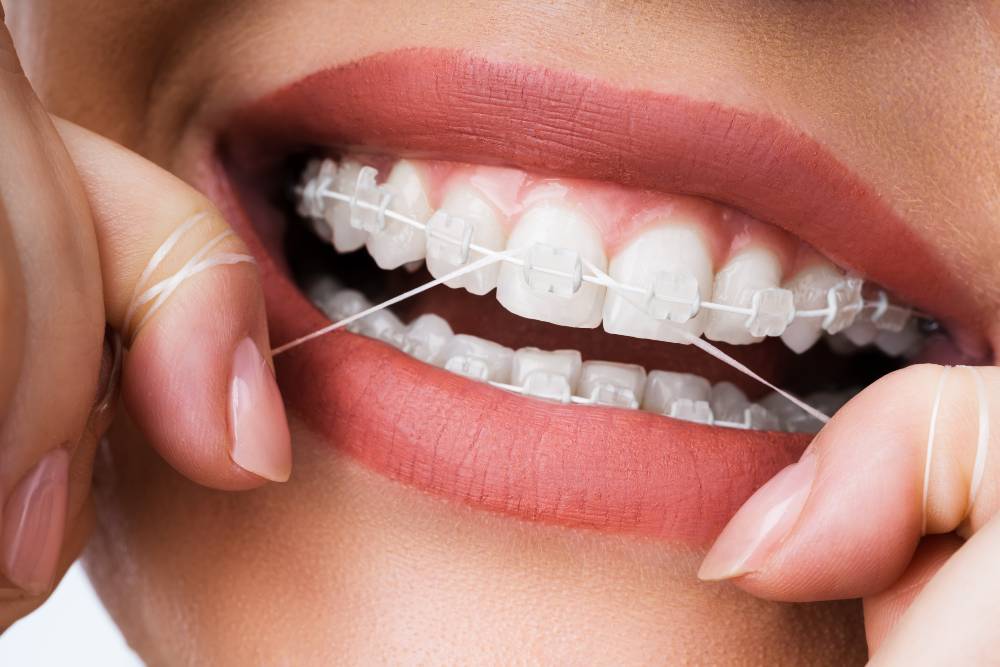Legacy Orthodontics for Beginners
Legacy Orthodontics for Beginners
Blog Article
The Basic Principles Of Legacy Orthodontics
Table of ContentsEverything about Legacy OrthodonticsThe Ultimate Guide To Legacy OrthodonticsLegacy Orthodontics Things To Know Before You Get ThisAll About Legacy OrthodonticsTop Guidelines Of Legacy Orthodontics
At Advanced Orthodontics, we give patients with a alternative therapy experience. In enhancement, we provide adjustable treatment routines, versatile payment choices and a fun, satisfying experience. orthodontics. Telephone call ( 480) 357-4900 today for more details and schedule a consultation.An orthodontist is a dental professional trained to diagnose, stop, and deal with teeth and jaw abnormalities. They correct existing problems and are trained to recognize troubles that may develop in the future. Orthodontists deal with individuals of any ages, from youngsters to adults. Individuals often link a best smile with health.
Malocclusion, or misaligned teeth, can cause oral issues, including dental caries, periodontal illness, and challenging or unpleasant eating. But not every person is birthed with straight teeth. If you have a bad bite or big spaces in between your teeth, you may wish to speak with a dental expert concentrating on orthodontic treatment.
Legacy Orthodontics - Truths
( Picture Credit Scores: DigitalVision/Getty Images) Orthodontists utilize repaired and removable oral devices, like braces, retainers, and bands, to transform the setting of teeth in your mouth. Orthodontic therapy is for oral irregularities, including: Crooked teethBite troubles, like an overbite or an underbiteCrowded teeth or teeth that are too far apartJaw misalignmentThe goal of orthodontic treatment is to enhance your bite.
A healthy bite guarantees you can eat, eat, and talk effectively. While you could consider orthodontists as generally for children or young adults that require braces, they can fix dental problems at any type of age. Orthodontists attend college, dental college, and orthodontic college. After graduation, they invest 2 or 3 years in an orthodontic residency program.
, but not all dental professionals are orthodontists. They concentrate on 2 locations: Just how to correctly and securely relocate teeth Just how to properly guide advancement in the teeth, jaw, and faceOnce an orthodontist has completed training, they have the option to come to be board licensed.
Some Ideas on Legacy Orthodontics You Need To Know
Imbalance, or malocclusion, is the most common factor people see an orthodontist. It is hereditary and is the outcome of size distinctions between the top and reduced jaw or between the jaw and teeth. Malocclusion brings about tooth congestion, a twisted jaw, or irregular bite patterns. Malocclusion is generally treated with: Your orthodontist connects metal, ceramic, or plastic square bonds to your teeth.
Some individuals require a headwear to aid relocate teeth into line with stress from outside the mouth. A retainer is a customized gadget that keeps your teeth in place.
They can produce added space in the mouth without having to pull teeth. Orthodontists use cables, surgical screws, or plates to sustain your jaw bone.
You might require to see an orthodontist if you have: Crowding or otherwise adequate area for all of your teethOverbite, when your top teeth come over your bottom teethUnderbite, when your base teeth are as well far forwardSpacing or problems with gapsCrossbite, which is when your upper teeth fit behind your bottom teeth when your mouth is closedOpen bite or a vertical space in between your front bottom and upper teethMisplaced midline, when the facility of your base and top teeth do not line up Dealing with an oral malocclusion can: Make attacking, eating, and speaking easierImprove the symmetry of our face and your total appearanceEase pain from temporomandibular joint conditionsDifferent your teeth and make them simpler to clean up, helping stop tooth degeneration or cavities It's usually a dental expert that first notifications misaligned teeth throughout a regular test.
The Single Strategy To Use For Legacy Orthodontics

During your very first orthodontic examination, you'll likely have: A dental examPhotos taken of your face and smileDental X-raysPanoramic (360 level) X-rays of your face and headImpressions to develop mold and mildews browse around this web-site of your teethThese tests will help your orthodontist know how to wage your therapy. orthodontics. An orthodontist is a dental professional who's had training to treat your teeth and jaw
Orthodontists may carry out surgery, exams,X-rays,and even more to assist you achieve a much more comfortable, healthier smile. An orthodontist is concentrated on your bite, so something like a cracked tooth would certainly be handled by a dental practitioner. Orthodontists are dentists yet not all dental experts are orthodontists. Orthodontists are concentrated on your bite, or the method your teeth fit with each other, and the straightness of your teeth.
Ever asked yourself exactly how celebrities constantly appear to have completely lined up teeth? The response commonly hinges on the competent hands of an orthodontist. Yet exactly what does an orthodontist do? Orthodontists are oral experts who concentrate on remedying abnormalities in the teeth and jaws. Their experience exceeds just developing a gorgeous smile; it includes improving your general oral wellness and function.
10 Easy Facts About Legacy Orthodontics Described

, orthodontists have a varied toolkit at their disposal. These tried-and-true braces use a system of braces bound to the teeth and attached by wires.
Clear aligners, like Invisalign, are a preferred choice for patients looking for an extra discreet treatment option. These removable trays are tailor-made to considerably change the teeth's placement. Headwear may be used in conjunction with braces or aligners to apply additional targeted forces, particularly for fixing jaw inconsistencies. In situations of narrow jaws, palatal expanders can be used to produce area for appropriate tooth alignment.
Report this page